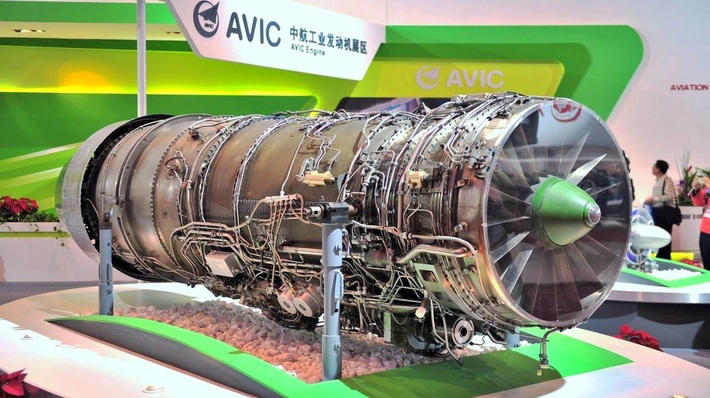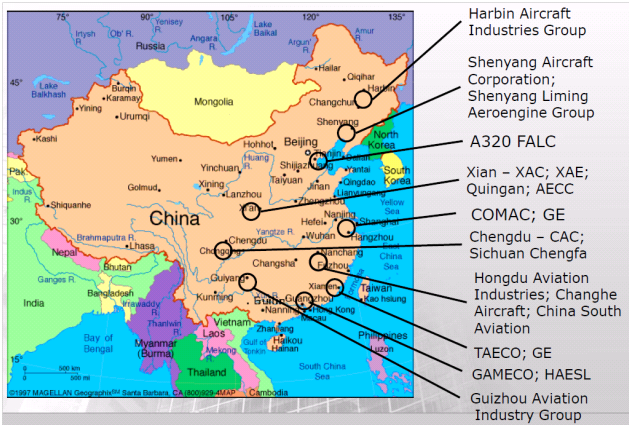Leeham News and Analysis
There's more to real news than a news release.
Bjorn’s Corner; The Engine Research Institutes
October 14, 2016, ©. Leeham Co: In our Corners on East bloc aeronautical industries, we will now look at the role of the Research Institutes in Russian and Chinese civil aircraft engine development.
The Russian engine industry is organized similarly to the aircraft industry. It has a powerful research organization which has a much larger role than research organizations in the West.
A large part of fundamental design work and testing is done at the research institute and not at the design bureau level, Figure 1.

Figure 1. PD-14 engine altitude testing at the Central Institute of Aviation Motor Development (CIAM) in Moscow. Source: CIAM.
The Chinese organization of the engine industry is similar, the difference being that the research organizations are organized within the giant AVIC (Aviation Industry Corporation of China) grouping, rather than reporting to the state via a research organization path.
The research institute role
The Soviet system built a three-layer structure for the creation of a powerful and well-founded Aeronautical industry. At the top was the industry research institute. This developed technologies and conceptual designs. It also contained the industry’s testing facilities and carried out certifications.
The aircraft design bureau went to the research institute do discuss suitable airframe/engine configurations when it got a design assignment. It also used the institute for almost all testing. The third layer was the serial production manufacturing company.
For the airframe discipline, the research institute was the well-known TsAGI, the Central Aerohydrodynamic Institute southeast of Moscow in Zhukovsky, close to the Ramenskoye airfield where all central test flights facilities are located.
For aircraft engines, the institute is called Baranov Central Institute of Aviation Motor Development, CIAM (or TsIAM in Russian). This institute is also based in east Moscow, not far from TsAGI.
It was created in 1930 and initially did all the design work for the early Soviet aircraft engines. After World War II, the institute focused on theoretical and experimental research, conceptual designs and engine testing facilities.
Engine design bureaus such as Klimov, Lyulka, Kuznetsov and Mikulin took over the design. These also developed the prototypes which were tested at the institute. When the engine was approved for serial production, it was handed over to production companies for mass production.
The CIAM theoretical and experimental research focused on suitable engine architectures for different flight regimes, the development of theoretical models for different engine parts and finally technology development for these parts.
This division of responsibilities persists today. The theoretical and experimental technology development is carried out CIAM, not at the design bureaus.
Examples include compressor/turbine theory such as 3D modeling of the supersonic aerodynamics of compressor/turbine stages. The institute then builds these stages and tests them in different test rigs. Other examples would be combustor theory and design.
When a design bureau is charged with designing a new engine, it consults with CIAM, which architecture and technologies to use. In cooperation with CIAM, early samples of engine parts are built and tested in CIAM’s facilities.
As the prototype engines get ready for test, CIAM is once again engaged. A lot of the engine tests are done at its facilities. To carry out such test in representative environments (including altitude chambers). the institute built Europe’s largest turbofan and turboshaft testing facility at Lytkarino from the 1950s forward (close to the Ramenskoye test airfield).
The centralization of technology development and testing facilities for Gasturbine development makes sense. Resources and knowledge is built in a central resource open to all design bureaus. The institute is also engaged in the later certification of the production engines using the same knowledge and test facilities.
China
China modeled its airframe and engine industry into the same three-layer structure as Russia (really, the Soviet Union). Over the last several decades, all three layers have been gathered in the giant Aviation Industry Corporation of China, AVIC (430,000 people, 100 companies and a total of 35 research institutes).
There has not been one central engine research institute. Rather, there is one for each agglomeration of aircraft industry or region. Examples are:
China Gas Turbine Establishment (the 624 Institute) in Mianyang (close to Chengdu), which was the institute that started the development of China’s first own core for the WS10 (Flanker turbofan), Figure 3. The core was later reused for China’s first high-bypass turbofan, the WS20 engine.

Figure 3. The WS10 military turbofan which was developed into the WS20 high bypass turbofan. Source: AVIC.
The development was later taken over by the Shenyang Aero-Engine Research Institute (the 606 Institute) and Shenyang Liming Engine Manufacturing Corporation (see Figure 4 for locations).
A third institute which is engaged in turboshaft engine research is Zhuzhou Aviation Power Plant Research Institute near Changshai, northeast of Guizhou.
The splitting of the research organizations in China delayed the development of a competitive engine industry. Contrary to Russia, the resources have been spread over the country with resulting infighting who shall be the interesting research assignments and the ensuing resources.
The grouping of all the institutes, design bureaus and production companies in the gigantic AVIC seems not to have helped.





I once visited a mind blowing test facility outside Moscow, abandoned, left over after the cold war. It had 3 /4 huge test cells dug into a hill were they used to test big engines (e.g. MIG 25) and rockets under the low pressure / temperature conditions similar to great heights. The required airco installation can be imagined & it had a separate powerplant to power the operation. I’ve not been able to trace it back. Any idea?
Hi Keesje,
no idea but institutes like CIAM does not have only one test site. That could have been part of CIAM as well, rocket engines is within their charter.
Ha, here in the UK we had one of those, RAE Pyestock. All closed now of course, engine testing now has to be done in the air. Occasionally people break in and film the place, there’s footage on YouTube.
Not sure whether that kind of establishment is still useful. Expensive to keep and not use, massively good value for money for those times when you really need it.
Not so long ago I was chatting to a couple of RR development engineers (of the old school). In their experience, no engine had ever quite behaved as the design simulations predicted. Sure, they’re getting better, but there’s still opportunities out there to be surprised. Sometimes the surprises are pleasant, sometimes they’re bad news… Bad news is better discovered before you’ve built an entire airframe around an engine and conducted a whole load of flight testing, not afterwards.
Notice the rusty ramp leading into the test chamber?
Any Western engine facility is gleaming.
“Notice the rusty ramp leading into the test chamber?”
Does it present a functional limitation ?
( and it isn’t rusty as afaics. more like chipped paint.
i.e. the site is not derelict as you seem to suggest.)